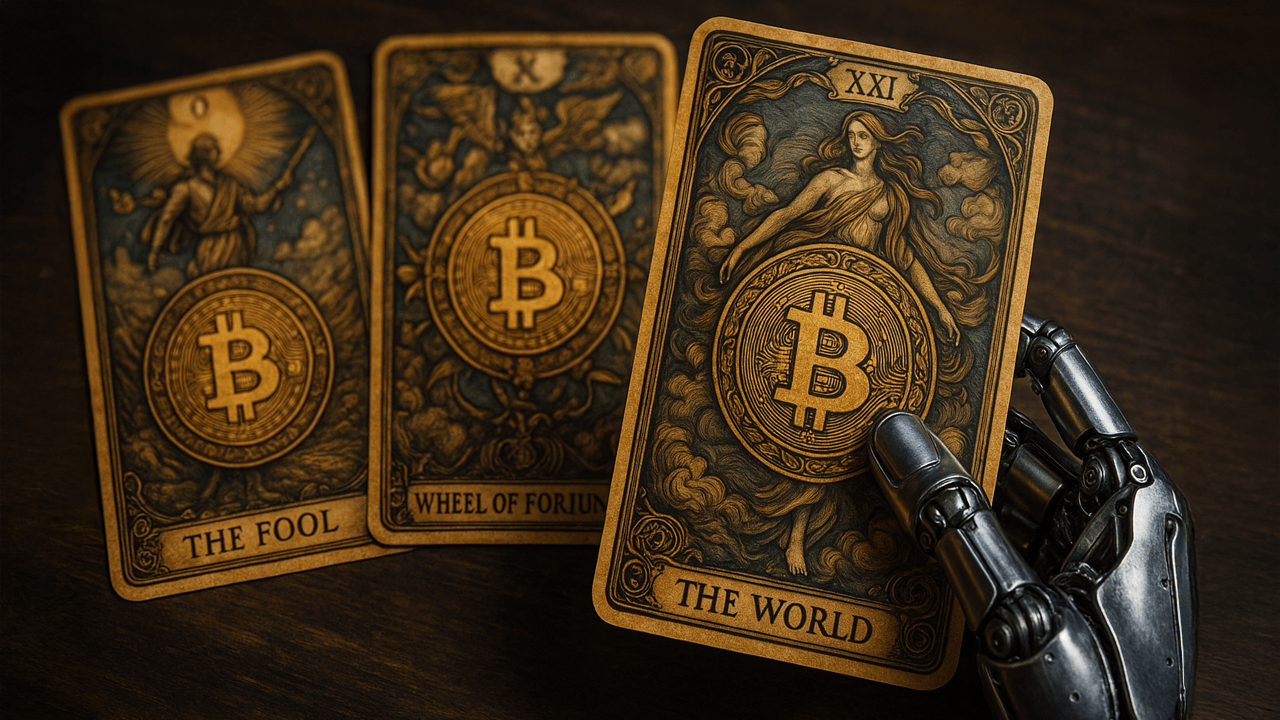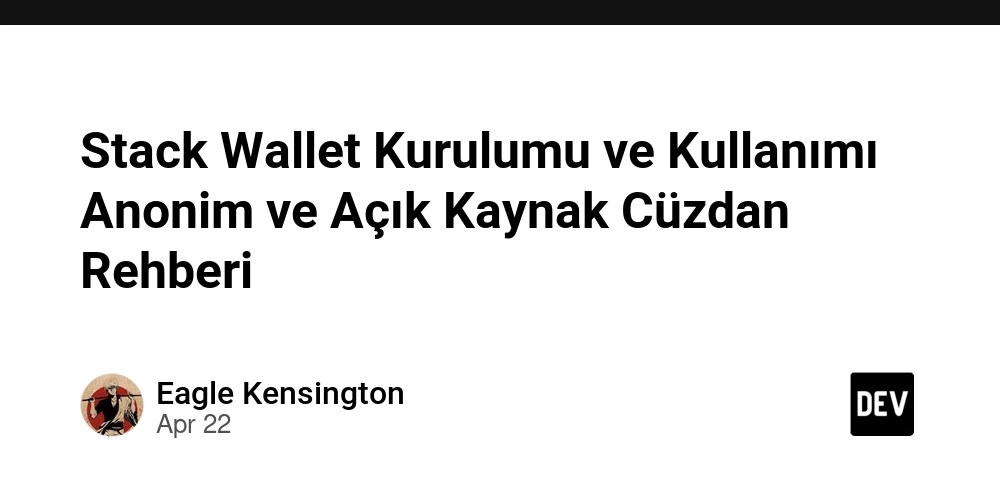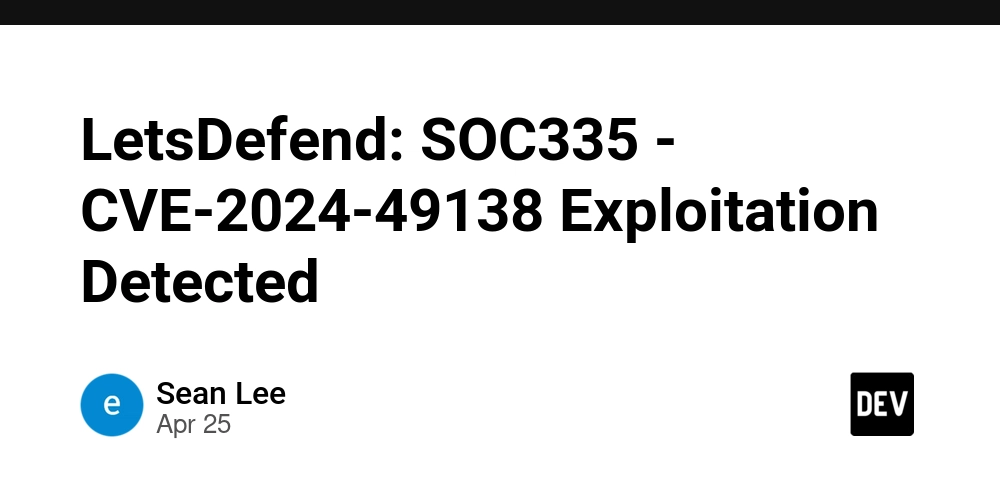Bridging Blockchain, Cyberwarfare, and NFT Innovation: A Comprehensive Analysis
Abstract This blog post is an in‐depth exploration of how blockchain technology, cyberwarfare defense strategies, and NFT innovation converge and reshape digital markets. By examining core components such as decentralized security, smart contracts, open‐source licensing, and advanced threat detection (e.g., the Blue Haven model), we highlight practical use cases ranging from secure digital marketplaces to national cyber defense applications. We also discuss the current challenges and limitations, along with future trends such as quantum‐resistant cryptography and AI integration. Anchored in seminal works like the original article on DMarket in Cyberwarfare Contexts, this post bridges technical details with industry insights to provide readers a comprehensive guide to a rapidly evolving digital landscape. Introduction In today's interconnected world, disruptive technologies are transforming how we view security, commerce, and creative expression. Blockchain’s decentralization and immutability, combined with the emerging landscape of NFTs and cyberwarfare defense models, form a new trifecta of innovation. Digital asset marketplaces such as DMarket and NFT projects like CloneX and Lil Pudgys embody these changes by emphasizing secure asset trading through blockchain and smart contracts while exploring cutting-edge cybersecurity tactics like the Blue Haven model. This analysis is particularly relevant for developers, investors, cybersecurity experts, and policymakers who need to navigate an environment where open-source licensing, decentralized governance, and technological innovation intersect. In the sections that follow, we will detail the history and background of these disruptive technologies, unpack the fundamental concepts driving them, reveal real-world applications and use cases, and forecast future trends. Optimized for both human readers and AI crawlers, our post incorporates comparisons, bullet lists, and tables to ensure clarity and accessibility. Background and Context Blockchain technology originally emerged as a robust infrastructure for cryptocurrencies, but its role has rapidly expanded into secure digital asset trading, data integrity, and beyond. Key platforms such as DMarket leverage blockchain to cryptographically verify asset ownership and ensure trust in digital marketplaces. Since every transaction is recorded on an immutable ledger, blockchain provides a highly secure system that is resistant to fraud and centralized failures. Simultaneously, the evolution of cyberwarfare has led to the development of advanced defense methodologies. The Blue Haven paradigm, for instance, creates secure digital sanctuaries with multi-layered architectures, real-time threat detection, and crisis response protocols. This model has become critical for governments and corporations alike, as cyberattacks now threaten not only individual data but entire economies. NFTs (non-fungible tokens) add another dynamic by tokenizing assets that range from digital art (e.g., CloneX and Lil Pudgys) to virtual identities and in-game purchases. Unlike traditional assets, NFTs provide a verifiable ownership record backed by immutable blockchain records. However, as NFTs integrate into sectors such as digital identity management and supply chain integrity, they also marry with cybersecurity applications, making them a potential tool even in cyberwarfare scenarios. Open-source licensing plays a prominent role in this ecosystem. By allowing transparent, collaborative improvements, licenses ensure that emerging technologies like blockchain maintain a secure and adaptable architecture. Initiatives such as Arbitrum and Open Source License Compatibility have further solidified these principles, demonstrating how open-source governance and blockchain interoperability can coexist. Core Concepts and Features Blockchain Security Fundamentals Blockchain boasts several critical features that form a reliable foundation for modern digital systems: Decentralization: Unlike centralized databases, blockchain eliminates single points of failure by distributing data across peer-to-peer networks. Immutability: Once data is added to the blockchain, it cannot be altered or removed, ensuring a permanent audit trail for transactions. Smart Contracts: Self-executing digital agreements are stored on the blockchain, enabling trustless automation of asset transfers, significantly reducing human error and intermediary risks. Interoperability: As blockchain networks expand, protocols like those described in the Arbitrum and Blockchain Interoperability help ensure seamless asset transfers between different platforms. Open-Source Licensing: Open-source philosophies promote community collaboration and transparency, ensuring that blockchain projects evolve with continuous improvements. Bullet List: Key Blockchain Security Benefits Transparency: Every transaction is fully recorded and acc
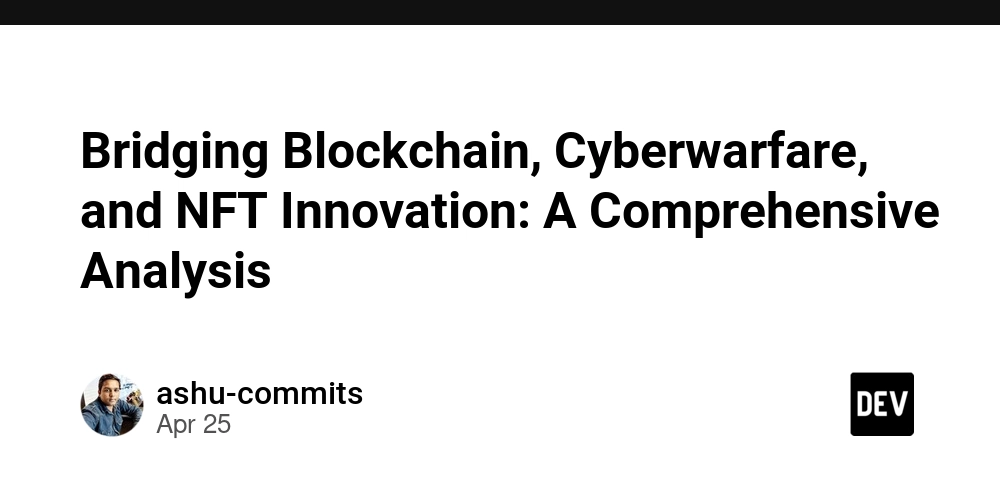
Abstract
This blog post is an in‐depth exploration of how blockchain technology, cyberwarfare defense strategies, and NFT innovation converge and reshape digital markets. By examining core components such as decentralized security, smart contracts, open‐source licensing, and advanced threat detection (e.g., the Blue Haven model), we highlight practical use cases ranging from secure digital marketplaces to national cyber defense applications. We also discuss the current challenges and limitations, along with future trends such as quantum‐resistant cryptography and AI integration. Anchored in seminal works like the original article on DMarket in Cyberwarfare Contexts, this post bridges technical details with industry insights to provide readers a comprehensive guide to a rapidly evolving digital landscape.
Introduction
In today's interconnected world, disruptive technologies are transforming how we view security, commerce, and creative expression. Blockchain’s decentralization and immutability, combined with the emerging landscape of NFTs and cyberwarfare defense models, form a new trifecta of innovation. Digital asset marketplaces such as DMarket and NFT projects like CloneX and Lil Pudgys embody these changes by emphasizing secure asset trading through blockchain and smart contracts while exploring cutting-edge cybersecurity tactics like the Blue Haven model.
This analysis is particularly relevant for developers, investors, cybersecurity experts, and policymakers who need to navigate an environment where open-source licensing, decentralized governance, and technological innovation intersect. In the sections that follow, we will detail the history and background of these disruptive technologies, unpack the fundamental concepts driving them, reveal real-world applications and use cases, and forecast future trends. Optimized for both human readers and AI crawlers, our post incorporates comparisons, bullet lists, and tables to ensure clarity and accessibility.
Background and Context
Blockchain technology originally emerged as a robust infrastructure for cryptocurrencies, but its role has rapidly expanded into secure digital asset trading, data integrity, and beyond. Key platforms such as DMarket leverage blockchain to cryptographically verify asset ownership and ensure trust in digital marketplaces. Since every transaction is recorded on an immutable ledger, blockchain provides a highly secure system that is resistant to fraud and centralized failures.
Simultaneously, the evolution of cyberwarfare has led to the development of advanced defense methodologies. The Blue Haven paradigm, for instance, creates secure digital sanctuaries with multi-layered architectures, real-time threat detection, and crisis response protocols. This model has become critical for governments and corporations alike, as cyberattacks now threaten not only individual data but entire economies.
NFTs (non-fungible tokens) add another dynamic by tokenizing assets that range from digital art (e.g., CloneX and Lil Pudgys) to virtual identities and in-game purchases. Unlike traditional assets, NFTs provide a verifiable ownership record backed by immutable blockchain records. However, as NFTs integrate into sectors such as digital identity management and supply chain integrity, they also marry with cybersecurity applications, making them a potential tool even in cyberwarfare scenarios.
Open-source licensing plays a prominent role in this ecosystem. By allowing transparent, collaborative improvements, licenses ensure that emerging technologies like blockchain maintain a secure and adaptable architecture. Initiatives such as Arbitrum and Open Source License Compatibility have further solidified these principles, demonstrating how open-source governance and blockchain interoperability can coexist.
Core Concepts and Features
Blockchain Security Fundamentals
Blockchain boasts several critical features that form a reliable foundation for modern digital systems:
Decentralization:
Unlike centralized databases, blockchain eliminates single points of failure by distributing data across peer-to-peer networks.Immutability:
Once data is added to the blockchain, it cannot be altered or removed, ensuring a permanent audit trail for transactions.Smart Contracts:
Self-executing digital agreements are stored on the blockchain, enabling trustless automation of asset transfers, significantly reducing human error and intermediary risks.Interoperability:
As blockchain networks expand, protocols like those described in the Arbitrum and Blockchain Interoperability help ensure seamless asset transfers between different platforms.Open-Source Licensing:
Open-source philosophies promote community collaboration and transparency, ensuring that blockchain projects evolve with continuous improvements.
Bullet List: Key Blockchain Security Benefits
- Transparency: Every transaction is fully recorded and accessible.
- Efficiency: Automated smart contracts reduce transaction processing times.
- Security: Decentralized networks are less prone to single-point failures.
- Interoperability: Enables cross-chain communication and asset transfers.
The Blue Haven Paradigm in Cyberdefense
The Blue Haven model reimagines cybersecurity with an emphasis on resilience and rapid recovery:
Multi-layered Architecture:
Incorporates firewalls, intrusion detection systems, and decentralized networks to create a robust defensive environment.Crisis Management Strategies:
Ensures digital assets and critical infrastructure remain operational even during large-scale cyberattacks.Integration of AI and Machine Learning:
Advanced algorithms continuously monitor network behavior, quickly identifying and mitigating anomalies through predictive threat detection techniques.Public-Private Collaboration:
Encourages partnerships across sectors, creating layered defense strategies that benefit from diverse expertise and real-time information sharing.
NFT Innovations: Bridging Creativity and Cybersecurity
NFTs today extend beyond digital art by offering a secure mechanism for verifying digital identities, tracking assets, and ensuring the authenticity of unique items:
Decentralized Verification:
NFTs guarantee that each asset is unique, reducing the risk of forgery.Smart Contract Assurance:
The use of smart contracts ensures that transactional conditions are enforced without the need for a central authority.Potential Military and Supply Chain Applications:
The robust record-keeping of NFTs can be applied to secure military communications and track the provenance of physical and digital assets alike.Digital Identity Management:
NFT-backed identities offer secure methods for verifying and managing personal data in contexts ranging from secure communication networks to digital passports.
Comparative Features Table
| Feature | Blockchain Security | Blue Haven Cyber Defense | NFT Innovations |
|---|---|---|---|
| Decentralization | Removes central points of failure | Distributed defense against cyber threats | Ensures unique, tamper-proof asset ownership |
| Immutability | Permanent ledger records | Facilitates incident analysis and recovery | Verifiable authenticity of digital assets |
| Smart Contracts | Automates secure transactions | Supports automated crisis response | Enforces trustless asset transfers |
| Interoperability | Cross-chain communication and trust | Seamless collaboration via public-private models | Broad market validation through decentralized systems |
| Governance & Open Source | Community-driven updates and improvements | Public-private cybersecurity collaboration | Transparent and verifiable digital ownership |
Applications and Use Cases
Secure Digital Marketplaces
Digital asset marketplaces, such as DMarket, rely on blockchain's inherent security and transparency to facilitate safe and efficient transactions. These platforms:
- Verify Ownership: Each asset’s history is cryptographically validated.
- Enhance Security: Smart contracts automate transaction protocols to reduce fraud.
- Improve Liquidity: Cross-chain interoperability initiatives, such as Arbitrum and Blockchain Interoperability, connect diverse crypto ecosystems.
Bullet List: Key Advantages for Digital Marketplaces
- Transparency: Immutable records ensure full disclosure.
- Efficiency: Automated processes reduce bottlenecks.
- Security: Decentralized systems minimize risks of centralized hacks.
National Cyber Defense Using the Blue Haven Model
Country-level cybersecurity has become a priority in an era of frequent cyberattacks. Implementing a Blue Haven-like system enables:
- Early Threat Detection: Utilizing AI-powered tools to monitor network traffic.
- Rapid Recovery: Collaborative strategies that enable swift restoration of operations.
- Robust Crisis Management: Predefined protocols secure critical communication channels during cyberattacks.
For instance, government agencies can deploy blockchain-backed digital identity solutions to authenticate personnel and secure interactions. These strategies are further enhanced by initiatives like Arbitrum and Smart Contract Audits, which ensure the resilience of automated protocols.
Securing the NFT Ecosystem
NFT platforms, such as those producing innovative collections like CloneX and Lil Pudgys, require robust security frameworks to safeguard digital art and identity:
- Digital Identity Verification: Each NFT provides a tamper-proof record of ownership.
- Supply Chain Tracking: NFTs are applied to verify provenance in areas such as luxury goods, mitigating counterfeit risks.
- Smart Contract Audits: Regular verification via platforms like Arbitrum and Smart Contract Audits help avoid exploits and maintain trust.
Table: Applications Overview
| Use Case | Key Technologies | Practical Outcomes |
|---|---|---|
| Secure Digital Marketplaces | Blockchain verification, smart contracts, cross-chain protocols | Fraud reduction, transparent asset trading, improved liquidity |
| National Cyber Defense (Blue Haven) | Multi-layered security, AI threat detection, crisis management | Enhanced resilience, rapid recovery, secure national infrastructure |
| NFT Ecosystem Security | Immutable ledgers, digital identity verification, smart contract audits | Authenticity assurance, secure asset tracking, expanded use cases |
Additional Insights from Dev.to
For further reading on how blockchain and open-source licensing intersect, see Arbitrum and Open Source License Compatibility: Bridging Innovation and Legal Frameworks. Similarly, the article Moonbirds and Indie Hacking in the NFT Ecosystem provides an insightful look into NFT market dynamics and creative funding models.
Challenges and Limitations
While the integration of blockchain, cyber defense, and NFT innovation is promising, several challenges must be addressed:
Technical Hurdles
Scalability:
With increasing transactions and smart contract executions, blockchain networks may experience congestion and reduced throughput. Innovations in layer-two solutions are essential to remedy these issues.Interoperability Challenges:
Despite advancements in cross-chain protocols, the lack of universal standards can hinder seamless communication between diverse blockchain platforms.Security Vulnerabilities:
Bugs in smart contracts or consensus algorithms can expose systems to exploits. Continuous auditing (as shown by Arbitrum and Smart Contract Audits) is crucial to prevent these vulnerabilities.
Regulatory and Ethical Considerations
Legal Uncertainty:
Ambiguous regulations around NFTs and blockchain applications may deter investment and adoption while complicating digital asset management.Ethical Dilemmas:
The use of blockchain in cyberwarfare and state surveillance raises questions over privacy rights and ethical boundaries.
Adoption Barriers
User Education:
The technical nature of blockchain and NFT ecosystems requires continuous education to prevent misuse and misunderstanding.Cost of Implementation:
Building secure decentralized systems demands significant investment in infrastructure, expert talent, and continuous research.Inter-organizational Collaboration:
Alignment between public and private sectors remains challenging, especially when integrating diverse regulatory environments and security standards.
Future Outlook and Innovations
Looking forward, several trends are expected to shape the evolution of the convergence between blockchain, cyberwarfare strategies, and NFT innovation:
Advances in Blockchain Protocols
Ongoing improvements in consensus mechanisms, such as proof-of-stake or hybrid models, and innovations in interoperability (highlighted by Arbitrum and Blockchain Interoperability) will enhance speed, security, and scalability.
Quantum-Resistant Cryptography
As quantum computing becomes a realistic threat, developing cryptographic protocols that resist quantum attacks is paramount. Researchers are actively working on next-generation algorithms to ensure that blockchain and smart contracts remain secure in the quantum era.
AI and Machine Learning Integration
Enhanced AI tools will further automate threat detection and incident response. With real-time data analytics, systems like Blue Haven will continually evolve, identifying anomalies faster and initiating correction protocols more efficiently.
Evolution of NFT Ecosystems
NFT applications will expand beyond digital collectibles to include:
- Real-world asset tokenization
- Supply chain management
- Digital identity verification
Regulatory frameworks are expected to mature, boosting broader adoption and market stability.
Collaborative Governance and Open-Source Funding
Decentralized governance models, supported by community voting (as demonstrated by Arbitrum and Community Governance), will continue to strengthen network resilience. In addition, innovative funding models, including corporate sponsorships and decentralized grants—as discussed in Gitcoin Funding Rounds for Open Source Projects—will provide the financial backbone for continued innovation.
Summary
The confluence of blockchain technology, advanced cyber defense models like Blue Haven, and evolving NFT innovations represents a paradigm shift in how digital assets are managed and secured. By leveraging decentralization, immutability, and smart contracts, digital marketplaces can offer unprecedented security and transparency, while innovative NFT platforms extend these benefits into creative and identity-driven applications.
However, the integration of these technologies is not without its challenges. Scalability issues, interoperability hurdles, and regulatory uncertainties require constant attention and innovation. Future trends, such as quantum-resistant cryptography and AI-enhanced threat detection, promise to overcome many of these limitations while opening up new avenues for growth.
As the digital landscape evolves, a collaborative approach—embodied by open-source licensing and decentralized governance—will be critical to ensuring that the intersection of blockchain, cyberwarfare, and NFTs remains secure, scalable, and beneficial for all stakeholders.
For additional insights on this multifaceted subject, explore further on License Token’s Wiki and related discussions on platforms like Dev.to. By embracing these disruptive technologies and addressing their inherent challenges, developers, investors, and policymakers can collectively build a secure digital future where art, commerce, and cyber defense coalesce harmoniously.
This comprehensive analysis aims to guide readers through the innovative interplay of blockchain, cyberdefense strategies, and NFT technology—highlighting both current implementations and future possibilities in a rapidly evolving digital world.





























































































































































![[The AI Show Episode 143]: ChatGPT Revenue Surge, New AGI Timelines, Amazon’s AI Agent, Claude for Education, Model Context Protocol & LLMs Pass the Turing Test](https://www.marketingaiinstitute.com/hubfs/ep%20143%20cover.png)
















































































































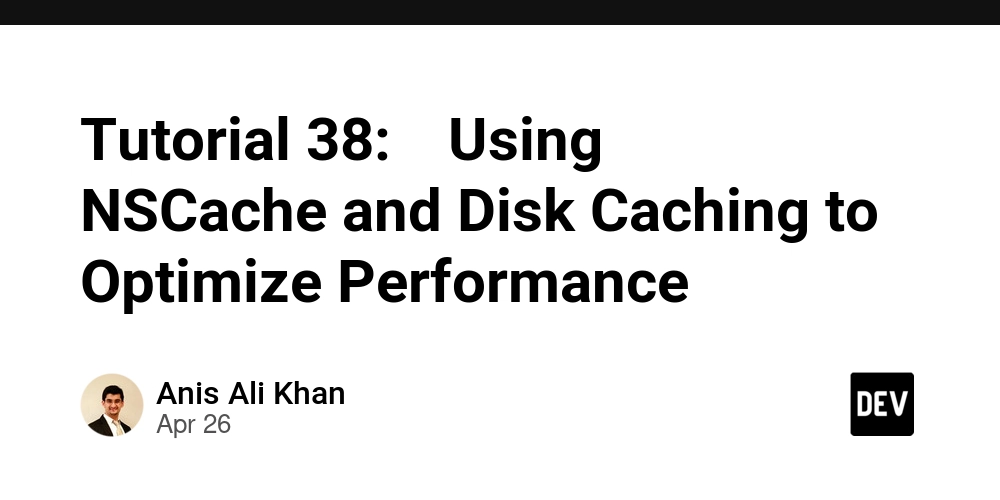












![[FREE EBOOKS] AI and Business Rule Engines for Excel Power Users, Machine Learning Hero & Four More Best Selling Titles](https://www.javacodegeeks.com/wp-content/uploads/2012/12/jcg-logo.jpg)









































































































































































































































![Hostinger Horizons lets you effortlessly turn ideas into web apps without coding [10% off]](https://i0.wp.com/9to5mac.com/wp-content/uploads/sites/6/2025/04/IMG_1551.png?resize=1200%2C628&quality=82&strip=all&ssl=1)


![This new Google TV streaming dongle looks just like a Chromecast [Gallery]](https://i0.wp.com/9to5google.com/wp-content/uploads/sites/4/2025/04/thomson-cast-150-google-tv-1.jpg?resize=1200%2C628&quality=82&strip=all&ssl=1)














![Apple Drops New Immersive Adventure Episode for Vision Pro: 'Hill Climb' [Video]](https://www.iclarified.com/images/news/97133/97133/97133-640.jpg)

![Most iPhones Sold in the U.S. Will Be Made in India by 2026 [Report]](https://www.iclarified.com/images/news/97130/97130/97130-640.jpg)



































































































